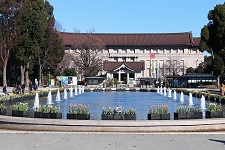WCGO 2019 Meeting & Hospitality
Address

The City
Tokyo, world's most populous metropolis is the busy capital of Japan. Tokyo mixes the traditional and the ultramodern historic temples. The opulent Meiji Shinto Shrine sits for its towering gate and surrounding woods. The Imperial Palace is known to be the amid large public gardens. The city's varied museums offer exhibits ranging from classical art to a reconstructed kabuki theatre. Preceding to 1868, Tokyo was also known as Edo, which was the small castle town in the 16th century which later became Japan's political center in 1603 when Tokugawa Ieyasu established his feudal government there. After few decades, Edo had grown into one of the world's most populous cities. Along with the Meiji Restoration of 1868, the emperor and capital moved from Kyoto to Edo, which was renamed Tokyo. Major parts of Tokyo were destroyed in the Great Kanto Earthquake of 1923 and in the air raids of 1945. It is also one of Japan's 47 prefectures, consisting of 23 central city wards and multiple cities, towns and villages west of the city center. The Izu and Ogasawara Islands are also part of Tokyo. Tokyo has the neon, skyscrapers, and salary man crowds, packed trains, cutting-edge architecture and futuristic technology. Yet it is also a city rooted in its traditions and in possession of a calm and efficient rhythm that belies its sprawling dimensions. And even though its home to a 13 million-plus population, trains run on time, there is no public litter and street crime is near non-existent. Tokyo also has ancient shrines, plant-covered wooden houses, cycling grannies, old-school sweet shops and village-like lanes.
Directions






